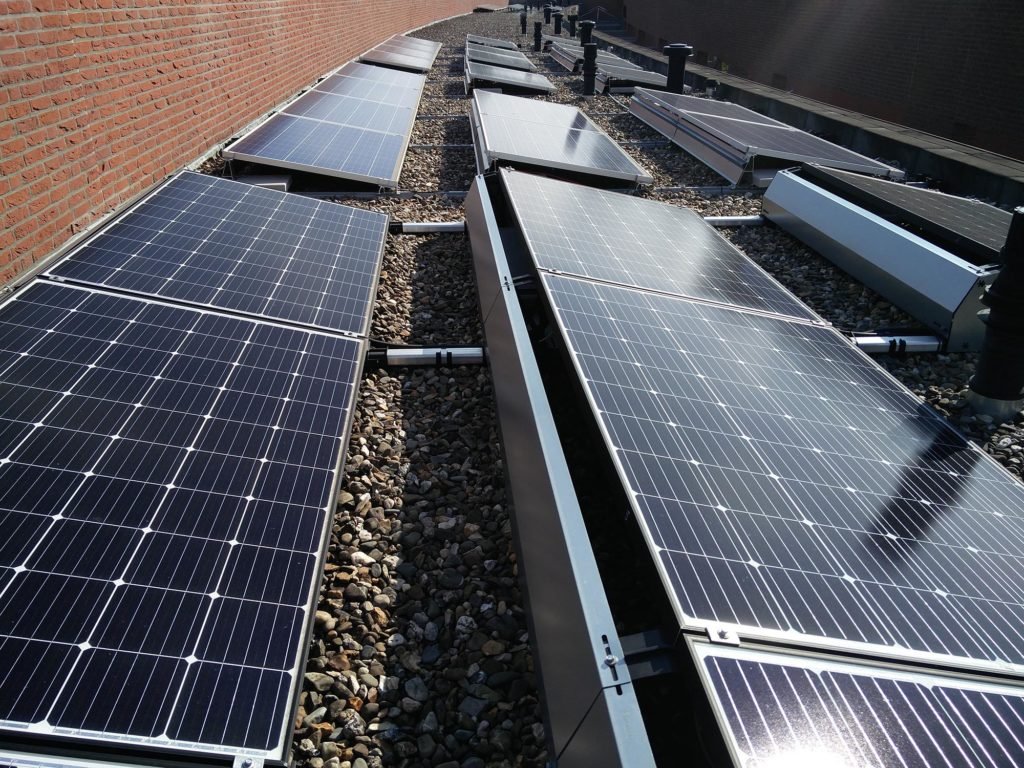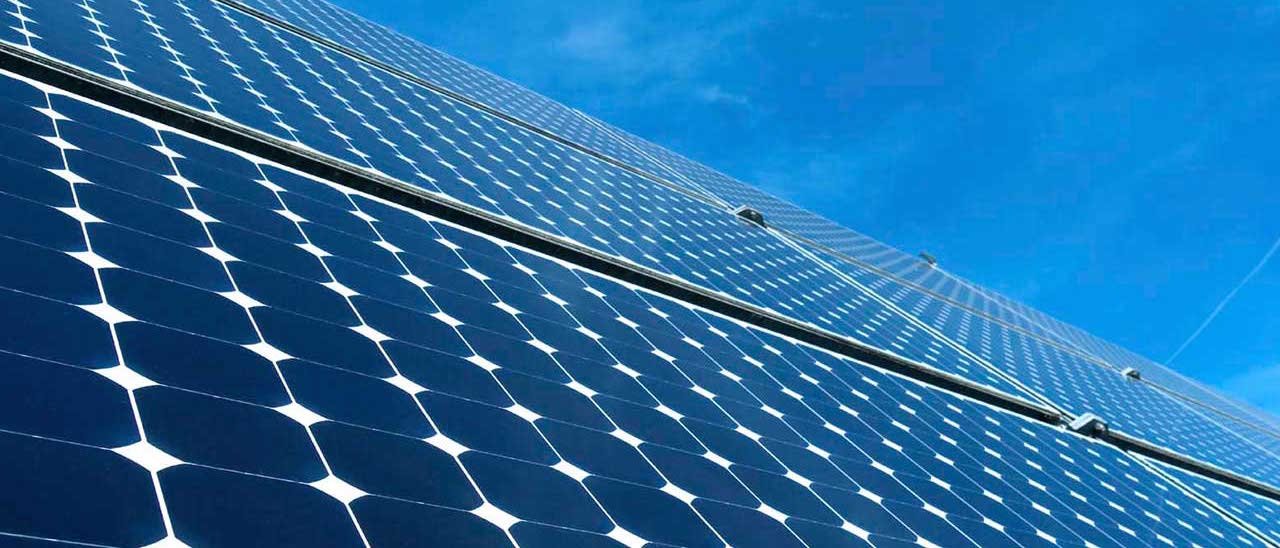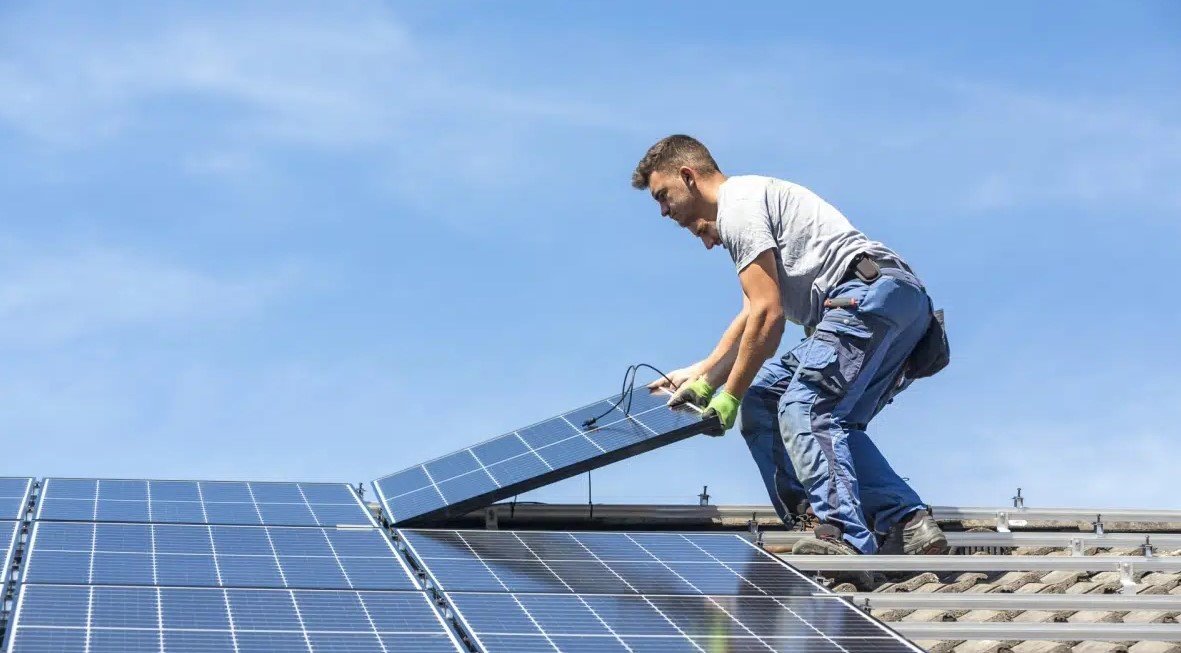
DIFFERENT TYPES OF PHOTOVOLTAIC SOLAR PANELS
If you are confused when choosing solar solar panels you should know the difference between the different types of photovoltaic solar panels.
In the current market there are different types of photovoltaic solar panels of different brands, colors, performance and sizes but what are the best, mono, polycrystalline or ammorfos?
I’m thinking about buying solar panels, but I’m a little “confused about what type to choose? You are reading this article for this .
There are a lot of variables that you should consider when comparing different types of photovoltaic solar panels and deciding which ones to buy.
Different types of photovoltaic solar panels
In this article, I will list the different types of photovoltaic solar panels for residential and commercial use (mono-, polycrystalline and thin-film).
Which would be the best option for your particular situation, depends on a series of variables. First let’s look at the different types of photovoltaic panels on the market today, we will try to list their advantages and disadvantages , and then look at some typical scenarios where some panels would be better than others (one of them is expected to fit to your case).
crystalline silicon
 Almost 90% of the photovoltaic panels in the world are based on some variation of crystalline silicon . The main difference of these solar cells is the purity of the silicon.
Almost 90% of the photovoltaic panels in the world are based on some variation of crystalline silicon . The main difference of these solar cells is the purity of the silicon.
What do I mean by the purity of silicon? For a short response, the silicon molecules are arranged in a specific way to improve the conversion of sunlight into electrical energy ( photovoltaic effect ).
As a general rule, purity and efficiency go hand in hand, but the processes used to increase the purity of silicon are expensive. This means that a solar panel with higher efficiency not necessarily the cost is lower for the rated power . Crystalline silica is used today in mono and polycrystalline cells:
The monocrystalline silicon solar cells
 Solar cells of monocrystalline silicon, also called monocrystalline silicon (sc-Si), which are easily recognizable by a uniform exterior appearance and color , which indicates high purity silicon, as can be seen in the photo on the side.
Solar cells of monocrystalline silicon, also called monocrystalline silicon (sc-Si), which are easily recognizable by a uniform exterior appearance and color , which indicates high purity silicon, as can be seen in the photo on the side.
Another good way to separate the monkey from polycrystalline solar panels is that the polycrystalline silicon photovoltaic cells are perfectly square
. Monocrystalline cells are made of silicon wafers, which is supplied in cylinders – a wafer is a thin slice of semiconductor material, such as a silicon crystal, in which integrated circuits are constructed by doping (with diffusion or ion implantation) ), the arrangement of thin layers of different materials, conductors, semiconductors or insulators, and their photolithographic engraving -.
To optimize performance and reduce the costs of a single solar panel, the wafer pulls out a piece of its square edges being removed, resulting in the characteristic shown in the image .
Benefits
- Since monocrystalline solar panels include the highest degree of purity of the silicon content thereof it is also the most efficient . The rate of return (the amount of energy in the form of sunlight that is converted into electrical energy), is usually around 12 to 19 percent.
- Another way of saying “high efficiency” is “space efficient”. Since monocrystalline panels have the highest energy production, they also require a smaller amount of space to achieve a desired capacity of the other types. Monocrystalline silicon panels generally have between 60 and 72 photovoltaic cells, the equivalent of a power of 120-300 Wp (watts peak).
- They also tend to last longer and most producers give a 25 year guarantee on them.
- They usually work better than a polycrystalline solar panel sorted in the same category under the lower solar intensity conditions and at lower temperatures .
disadvantages
- Monocrystalline solar panels are the most expensive . From the financial point of view, if you have enough space, you should choose a solar panel that is made of amorphous or polycrystalline silicon.
- If the panel is partially covered by shadow, dirt or snow, the entire circuit breaks . If a micro-inverter is not used, this could mean that the entire row of solar panels will have a much lower performance than the nominal level.
- To create monocrystalline silicon, you have to make large cylindrical ingots with the Czochralski process – The Czochralski process is a technique introduced in industrial production systems in the early 50s, which allows the growth of extremely pure monocrystals .
- In the industrial field this process is mainly used in the cutting of silicon blocks, which are obtained in the form of a cylindrical tablet. The process is named after the Polish researcher Jan Czochralski who developed it in 1916, while studying the crystallization of metals. Due to the geometry of these ingots, the monocrystalline silicon cells are not entirely square, and significant amounts of silicon from the ends are wasted .
- Monocrystalline panels are more efficient during the cold season, but when the temperature increases, the electric conversion rate decreases .
Polycrystalline silicon solar cells
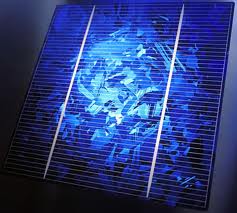 Polycrystalline silicon, also called polysilicon (p-Si) and multicrystalline (mc-Si), began to appear on the market in 1981. Approximately 45% of today’s solar panels are made by this type of silicon . The polycrystalline silicon, the cut is not made with the Czochralski process as is its precursor. Instead, the raw silicon is melted and poured into a square mold, which, once cooled, can cut perfectly square wafers.
Polycrystalline silicon, also called polysilicon (p-Si) and multicrystalline (mc-Si), began to appear on the market in 1981. Approximately 45% of today’s solar panels are made by this type of silicon . The polycrystalline silicon, the cut is not made with the Czochralski process as is its precursor. Instead, the raw silicon is melted and poured into a square mold, which, once cooled, can cut perfectly square wafers.
Benefits
- The process used to manufacture polycrystalline silicon is simpler and less expensive. Since the wafers are already square, there is also less waste compared to monocrystalline. Therefore, polycrystalline solar panels cost less .
- Polycrystalline panels have a heat tolerance than monocrystalline silicon. The temperature affects the performance of a photovoltaic panel and can also reduce the duration of its useful life. However, most polycrystalline panels are manufactured with the same 25 year warranty
- They tend to have better results than the only crystal when used at high temperatures .
disadvantages
- These panels are not as efficient as monocrystalline silicon because it is less pure. In addition, lower heat tolerance also contributes negatively to performance rates. However, technology is constantly improving. In a short time polycrystalline will approach the monocrystalline yields.
- Therefore, you need more panels to cover a larger area to produce the same amount of electricity as you would with a monocrystalline silicon panel.
- Some people think that monocrystalline solar panels and thin film solar panels will look better because they have a uniform color on the appearance of blue stains of polycrystalline silicon.
String Ribbon solar cells
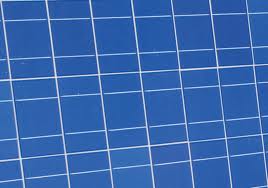 The String Ribbon solar panels are also made of polycrystalline silicon . These solar panels are used in about 5% of the market of photovoltaic cells to crystalline silicon.
The String Ribbon solar panels are also made of polycrystalline silicon . These solar panels are used in about 5% of the market of photovoltaic cells to crystalline silicon.
Chain tape is the name of a specific method for the production of polycrystalline silicon. Heat-resistant cables are pulled through molten silicon, which is transformed into a very thin silicon tape. Solar panels manufactured with this technology look very similar to conventional polycrystalline solar panels.
Thin-film solar cells (TFSC)
 The thin film solar cells are made by a thin film photovoltaic material n attached to a substrate . The different types of thin film photovoltaic cells can be classified by the photovoltaic material that is part of the substrate:
The thin film solar cells are made by a thin film photovoltaic material n attached to a substrate . The different types of thin film photovoltaic cells can be classified by the photovoltaic material that is part of the substrate:
- thin film of silicon (a-Si)
- cadmium telluride (CdTe)
- copper, indium and gallium selenide (CIGS)
- Organic photovoltaic cells (OPC)
The different types of photovoltaic solar panels within which thin film solar panels are still not on the market, but in the process of research and experimentation. Cadmium telluride is the only thin-film solar cell with breaking crystalline silicon when it comes to cost efficiency, but only for large installations . Therefore, it is not discussed in more detail in this article. The only thin film solar cells that will be treated are those made of amorphous silicon.
Amorphous silicon panels (a-Si)
 Thin film solar cells currently occupy about 5% of the photovoltaic market. However, it is a relatively new technology, but promising, and aims to improve and rapidly increase in number. If you have ever used a solar calculator before, you have seen a photovoltaic amorphous silicon cell up close.
Thin film solar cells currently occupy about 5% of the photovoltaic market. However, it is a relatively new technology, but promising, and aims to improve and rapidly increase in number. If you have ever used a solar calculator before, you have seen a photovoltaic amorphous silicon cell up close.
Benefits
- Instead of thick silicon wafers, the thin film solar cells are covered with photovoltaic material just enough to cover the surface of the substrates. The amorphous silicon solar panels using even smaller amounts of silicon with respect to the two mono-and polycrystalline panels .
- The production process that is used for the production of amorphous silicon thin film solar cells is relatively simple, easy to scale, and requires only small amounts of silicon. These solar cells are therefore generally cheaper than crystalline silicon .
- It can be made flexible and lightweight . A flexible module allows you to be much more creative when it comes to applications. They can be placed on curved surfaces, and probably in the future they will be incorporated into garments! The strength and flexibility of thin film solar panels depend on the surface to which it is highly connected.
- These solar panels provide better performance in worse light conditions and react better in cases of partial coverage , such as in the shade, dirt and snow than the crystalline panels.
disadvantages
- Thin-film solar panels do not last as long as mono and polycrystalline. Therefore, the guarantee granted by the manufacturer is generally lower than other solar panels .
- Amorphous solar cells have only a conversion rate of 6 to 12 percent . However, because the technology is relatively new, it is expected that the efficiency rates will grow steadily until approaching those of the crystalline panels.
- Solar panels made of this material are, therefore, the least efficient when looking in space , which means you have to cover a larger surface area to have the same power of crystalline silicon. They are also much heavier.
Different types of photovoltaic solar panels What type of solar panel should I choose?
Talking to someone with experience would be the best way to find out. These are some of the typical situations:
cheap
The low cost category is probably the largest of them all. If you want the lower cost per nominal power, ie pay as little as possible to generate electricity, you should investigate if the thin-film solar panels combine well with the crystalline solar panels and this mix so it could be your best election .
limited space
Within the different types of photovoltaic solar panels , you can find panels for those who do not have space for thin-film solar panels (or if you want to limit the amount of space they occupy in the photovoltaic system), or if they are simply not advantageous for This type of panels in your home, a crystalline photovoltaic panel is usually the right choice .
The manufacturer usually provides a number of different sizes of solar panels. Solar panels 180, 200 and 220 watts usually have the same dimensions .
Therefore, they are manufactured in an identical manner, but show a higher or lower performance during the test phase, then they end up in different categories of rated power. If size is a concern, you should choose the maximum output power for a certain size (dimension) of the panel.
the different types of photovoltaic solar panels Both mono and polycrystalline panels are a good option and offer similar advantages. Although polycrystalline solar panels, the panels tend to be less efficient in small space and solar monocrystallines tend to produce more energy, this is not always the case. It would be almost impossible to recommend one or the other until you have examined your situation in particular (of area, area, place, climatic conditions) more closely.
In other words, technically it must generate the same amount of electricity, as a panel of a single crystal of 120 W and a similar polycrystalline (therefore always 120 W nominal) , but that of monocrystalline silicon usually occupy less space, even if it goes to cost more .

